Click on all the images to enlarge them, and sometimes for more information about them. You may use these images without prior permission for any scholarly or educational purpose as long as you (1) credit the source and (2) link your document to this URL in a web document or cite the Victorian Web in a print one.

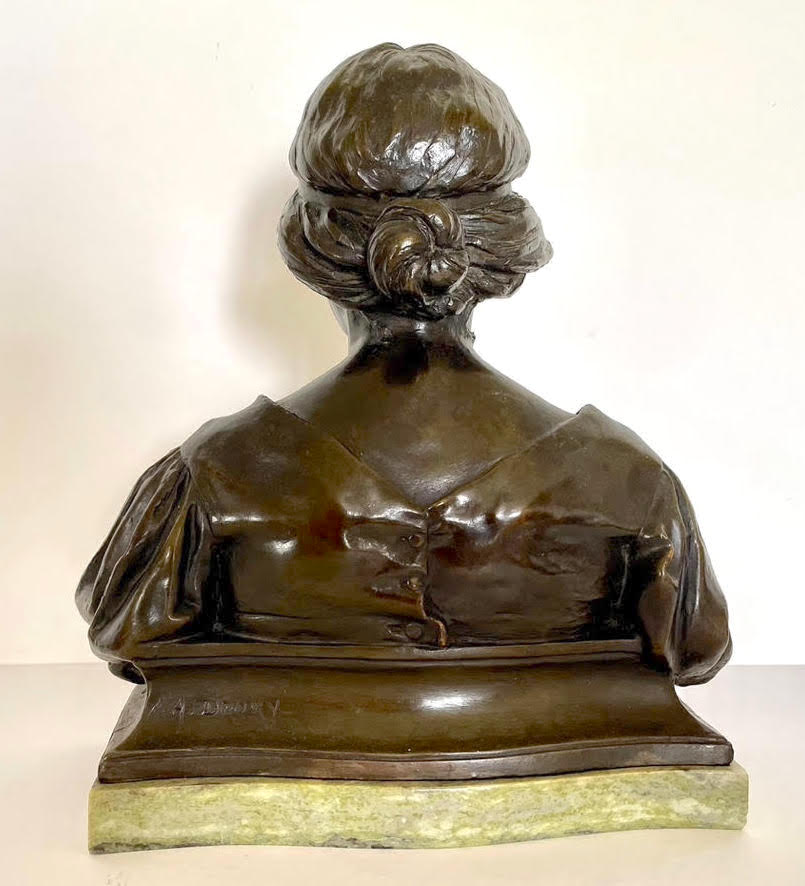
Griselda, by Alfred Drury (1856-1944), c.1896. Bronze sculpture on green marble base. 10 1/2 x 8 3/4 in. (27.0 x 22 cm). Private collection.
The title of this sculpture is taken from a story of faithful love in The Decameron by the Italian author Giovanni Boccaccio. Griselda was a humble country girl chosen by Walter [Gualtieri], the Marquis of Saluzzo, formerly a confirmed bachelor, to be his wife. In order to try her patience and obedience he set her various tests and trials, including taking her children and pretending to murder them. He divorced her and sent her back to her father's cottage for many years. She endured patiently without complaining and eventually was called back to be a servant before finally being restored to her status as a wife and mother. She has thus become a symbol of patience in suffering. Chaucer later told a version of this story in his Clerk's Tale from The Canterbury Tales. Drury might have been inspired to produce this bust in 1896 by Edward Walford's book of poems entitled Patient Griselda and other Poems published in 1895. Jane Winfrey felt that Drury's Griselda "does have an expression of fortitude, suffering and patience." (40).


Left: Griselda (50 cm. bronze version dated 1896). Right: Griselda (38 cm. bronze version dated 1907).
The original larger bronze version of this sculpture was exhibited at the Royal Academy in 1896, no. 1836, where it was purchased by the trustees of the Chantrey Bequest for the Tate Gallery. This larger work is not illustrated on the Tate Britian website but is illustrated in Spielmann (113). When Griselda was exhibited at the Royal Academy a critic for The Art Journal found the work charming: "Mr. Alfred Drury, whose Griselda has infinite charm of treatment and type" (182). The costume and the way the bust is cut straight across are all indebted to Renaissance sculpture. Griselda proved to be immensely popular and Drury made three different versions of varying sizes and on different bases.
Some versions consist only of the head and neck without the shoulders and costume. The smaller versions lack the winged cherub at the base as compared to the large version at the Tate. Benedict Read has suggested that "the cherub on the base of the sculpture is symbolic of the hidden love that sustained her" (144). Also in existence, in another private collection, is a plaster Griselda on marbleized wooden base, 29cm high x 26cm wide x 9cm deep,signed: “A. Drury.”
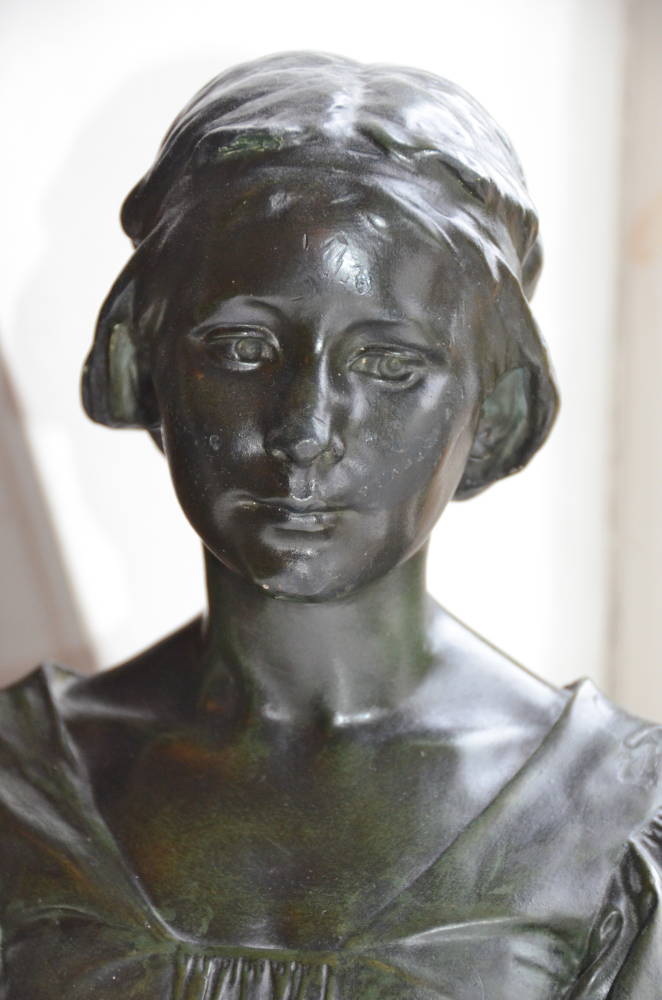
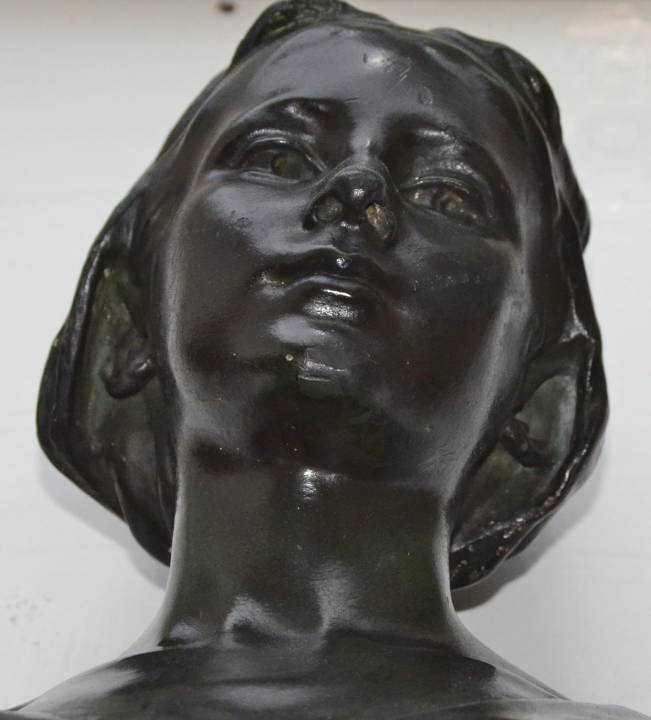
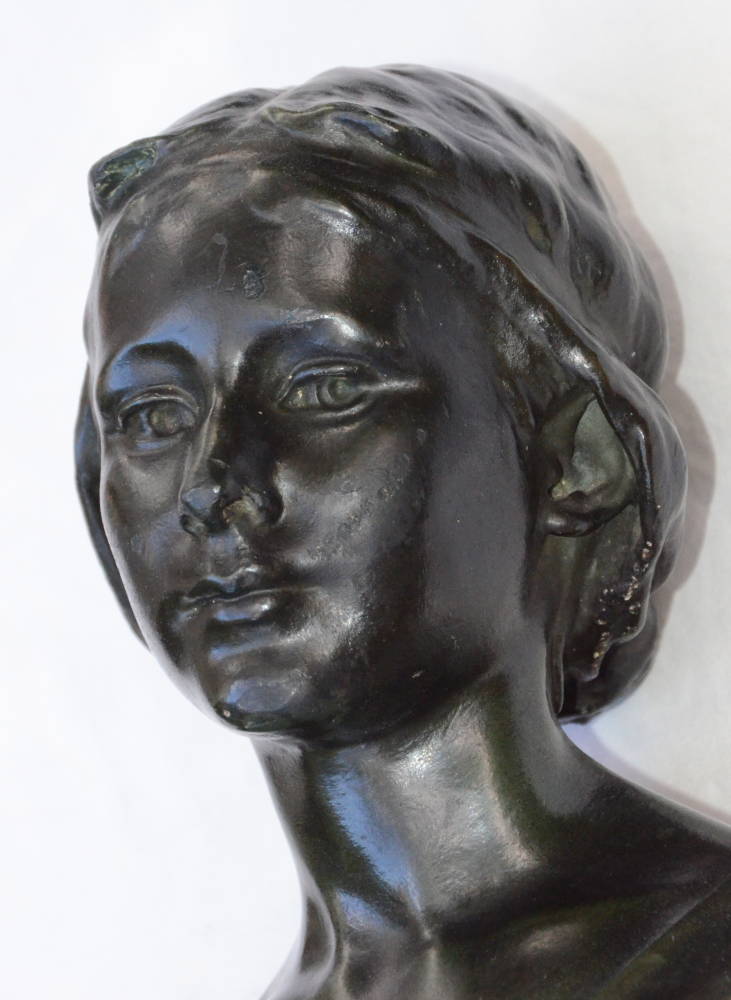
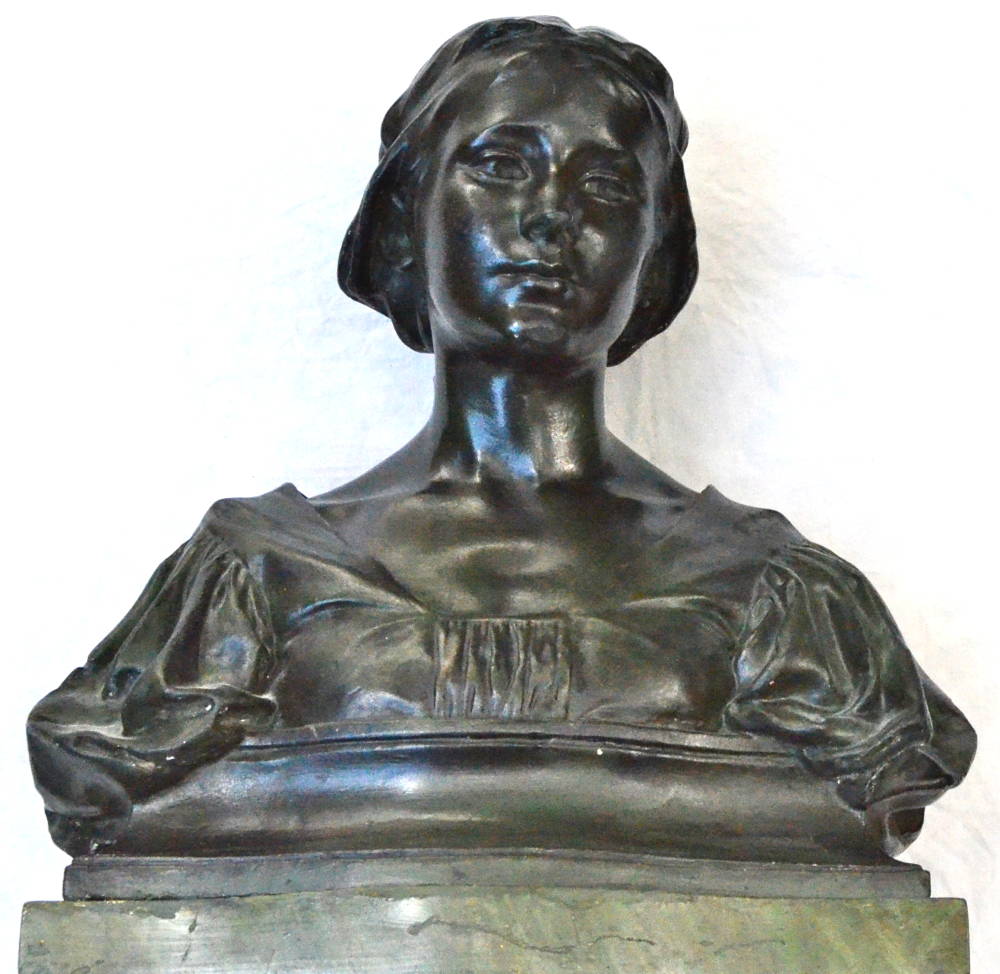
Four views of a plaster version of Drury's Griselda, on a marbleized wooden base (29cm h. x 26cm w. x 9cm d), signed by the sculptor and in a private collection).
Spielmann has described the sculpture as being "in the spirit of the St. Agnes - an exquisite study of childhood, fine as sculpture, elegant and beautiful as decoration" (112). It is one of a series of such female studies of "ideal busts" that Drury produced In the closing years of the nineteenth century, the best known of which are Griselda and The Age of Innocence. Winfrey has noted that: "Griselda embraced the New Sculpture ideals. She was a mood portrait that captured the essence of the new symbolist thoughts, embodying emotion and imagination. She also fulfilled the move toward sculpture in the home; no longer simply an object for admiration in an exhibition but portable and able to adorn a domestic setting" (40).
The model for Griselda was again Claire Doncaster, the same model who posed for My Queen.
Links to Related Material
- The Proposal (The Marquis and Griselda), by Frederic George Stephens
- Preliminary Sketch for Griselda’s First Trial of Patience by Charles West Cope
Bibliography
Read, Benedict. The Last Romantics. London: Lund Humphries, 1989, cat. 190, 144.
"The Royal Academy." The Art Journal New Series XXXV (1896): 161-82.
Spielmann, Marian H. British Sculpture and Sculptors of Today. London: Cassell and Co., 1901. 112-13.
Winfrey, Jane. Alfred Drury and the New Sculpture. Canterbury: University of Kent, 2013, 40-41
Last modified 16 September 2011